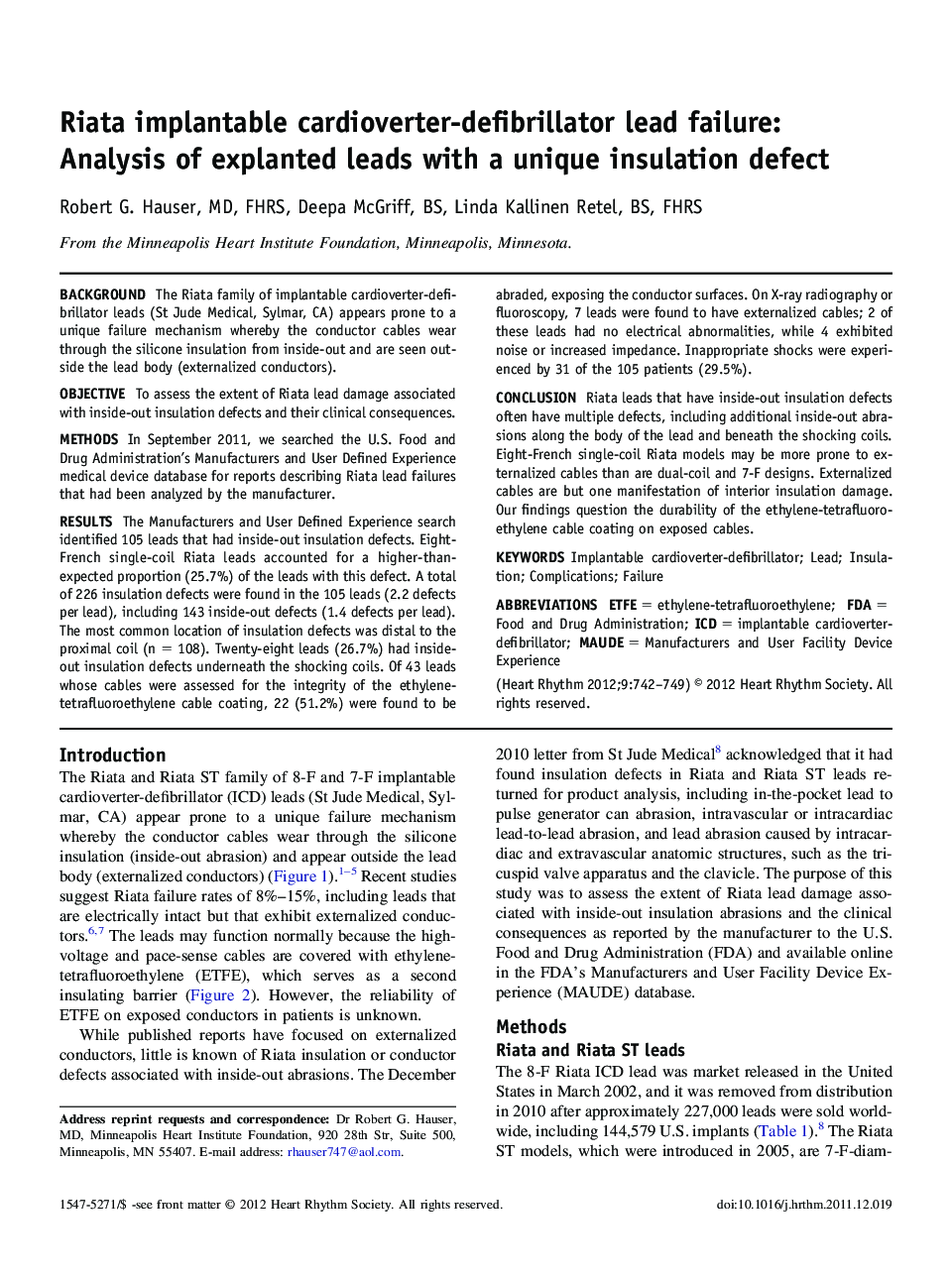| کد مقاله | کد نشریه | سال انتشار | مقاله انگلیسی | نسخه تمام متن |
|---|---|---|---|---|
| 2922449 | 1175846 | 2012 | 8 صفحه PDF | دانلود رایگان |

BackgroundThe Riata family of implantable cardioverter-defibrillator leads (St Jude Medical, Sylmar, CA) appears prone to a unique failure mechanism whereby the conductor cables wear through the silicone insulation from inside-out and are seen outside the lead body (externalized conductors).ObjectiveTo assess the extent of Riata lead damage associated with inside-out insulation defects and their clinical consequences.MethodsIn September 2011, we searched the U.S. Food and Drug Administration's Manufacturers and User Defined Experience medical device database for reports describing Riata lead failures that had been analyzed by the manufacturer.ResultsThe Manufacturers and User Defined Experience search identified 105 leads that had inside-out insulation defects. Eight-French single-coil Riata leads accounted for a higher-than-expected proportion (25.7%) of the leads with this defect. A total of 226 insulation defects were found in the 105 leads (2.2 defects per lead), including 143 inside-out defects (1.4 defects per lead). The most common location of insulation defects was distal to the proximal coil (n = 108). Twenty-eight leads (26.7%) had inside-out insulation defects underneath the shocking coils. Of 43 leads whose cables were assessed for the integrity of the ethylene-tetrafluoroethylene cable coating, 22 (51.2%) were found to be abraded, exposing the conductor surfaces. On X-ray radiography or fluoroscopy, 7 leads were found to have externalized cables; 2 of these leads had no electrical abnormalities, while 4 exhibited noise or increased impedance. Inappropriate shocks were experienced by 31 of the 105 patients (29.5%).ConclusionRiata leads that have inside-out insulation defects often have multiple defects, including additional inside-out abrasions along the body of the lead and beneath the shocking coils. Eight-French single-coil Riata models may be more prone to externalized cables than are dual-coil and 7-F designs. Externalized cables are but one manifestation of interior insulation damage. Our findings question the durability of the ethylene-tetrafluoroethylene cable coating on exposed cables.
Journal: Heart Rhythm - Volume 9, Issue 5, May 2012, Pages 742–749